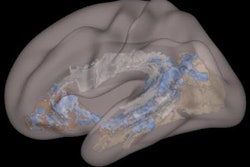Thursday, December 5 | 11:10 a.m.-11:20 a.m. | SSQ01-05 | Room S406B
In this award-winning session, University of Pittsburgh researchers will discuss how background parenchymal enhancement (BPE) imaged by dynamic contrast-enhanced (DCE) breast MRI provides additional diagnostic information compared with using tumor-derived radiomics data alone.Presenter Dooman Arefan, PhD, of the University of Pittsburgh and colleagues found that increased BPE is associated with higher breast cancer recurrence risk and axillary lymph node (ALN) metastasis, and it can improve diagnosis when combined with tumor-derived radiomics.
Breast tumor-derived radiomic features in breast DCE-MRI have been associated with breast cancer prognosis, and DCE-MRI background parenchymal enhancement has been noted as a risk marker for the disease. So Arefan's team evaluated BPE measured in cancer-affected breasts in association with breast cancer distant recurrence risk (assessed with Oncotype DX) and axillary lymph node metastasis.
The study included 244 women divided into two groups: Group 1 included 127 estrogen receptor (ER)-positive and node-negative invasive breast cancer patients who had Oncotype DX scores available, while group 2 had 117 invasive breast cancer patients who had axillary lymph node metastasis status available. Arefan's group segmented the tumors using MRI segmentation software, then extracted DCE-MRI radiomic features from these segmented tumors. The team used area under the curve (AUC) and accuracy to assess the performance of using radiomics alone, assessing BPE alone, and combining radiomics with BPE as assessed by DCE-MRI.
The combination of radiomics and BPE assessment provided the highest AUC and accuracy values, the group found:
- The tumor-based radiomic model's AUC was 0.76 for Oncotype DX and 0.88 for axillary lymph node classification.
- BPE alone's AUC was 0.75 for Oncotype DX and 0.82 for axillary lymph node classification.
- Combined radiomics and BPE produced an AUC of 0.82 for Oncotype DX and 0.92 for axillary lymph node classification; accuracy increased from 76% to 80% (Oncotype) and from 83% to 92% (ALN).
"Quantitative BPE is associated with breast cancer distant recurrence risk and ALN metastasis, and it can enhance the classification when combined with tumor-derived radiomics," Arefan and colleagues concluded.
Get all the details by attending this presentation, which was awarded the RSNA's trainee research prize for a fellow.





















